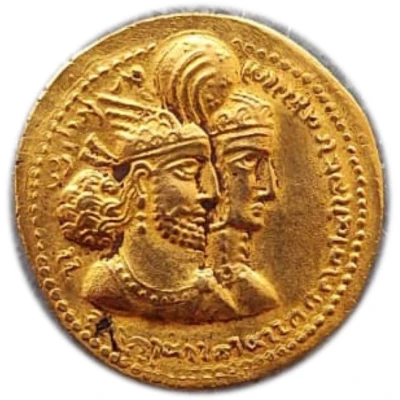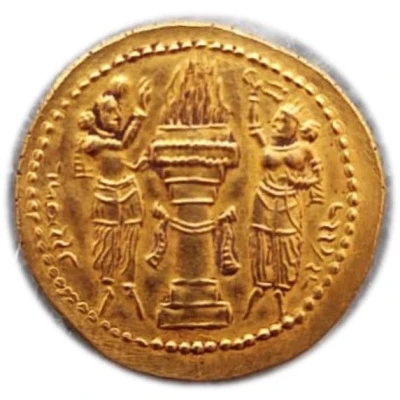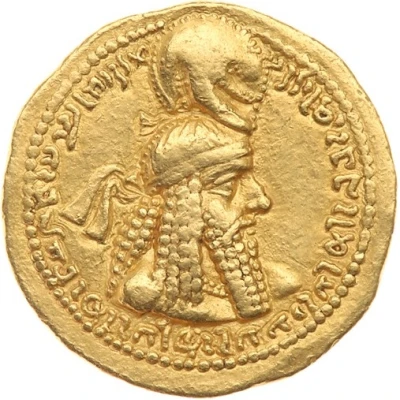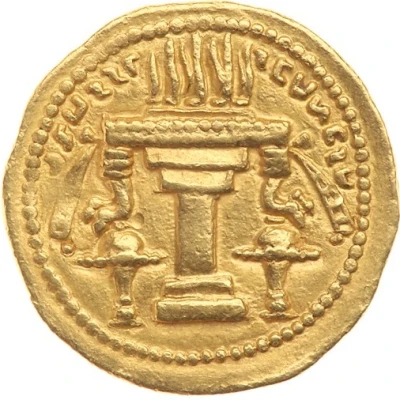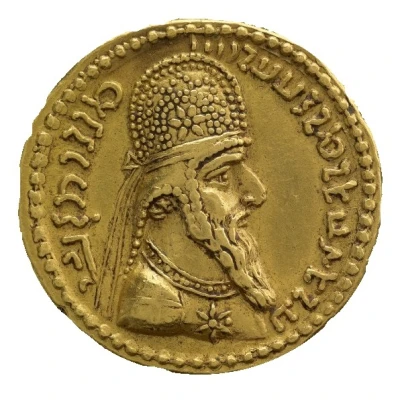
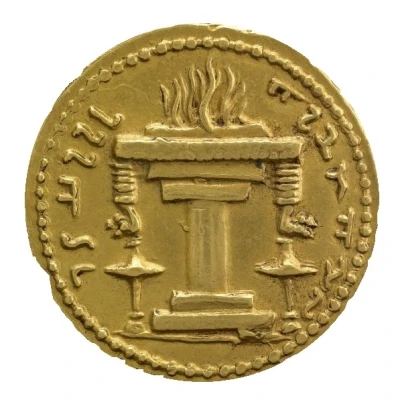

Dinar - Ardashir I type II - Parthian style Kulah
| Gold | 8.47 g | 22 mm |
| Issuer | Sasanian Empire (Sasanian Empire (224-651)) |
|---|---|
| Emperor | Ardashir I (224-242) |
| Type | Circulating commemorative coin |
| Years | 224-241 |
| Value | Dinar (1) |
| Currency | Dinar (224 AD-651 AD) |
| Composition | Gold |
| Weight | 8.47 g |
| Diameter | 22 mm |
| Shape | Round (irregular) |
| Technique | Hammered |
| Demonetized | Yes |
| Updated | 2024-10-10 |
| Numista | N#89994 |
|---|---|
| Rarity index | 97% |
Reverse
A fire-altar (atasdan) in the form of column with a capitellum and base consisting of some plates. Under the capitellum there is a tongue of flame. The capitellum is supported by stands in the form of "lion paws" resting upon censers. The stands are decorated with bows. There is a pointed rim around the picture.
Pahlavi legend
Lettering: NWR ' ZY ' rthstr-Adur i Ardaxsir
Translation: Fire (fire-altar) of Ardashir
Edge
Plain
Interesting fact
One interesting fact about this coin is that it features a unique blend of Parthian and Sasanian styles, reflecting the cultural exchange and influence of the two empires during that time period. The coin's design includes elements such as a crowned bust of Ardashir I, a legend in Pahlavi script, and a reverse side with a fire altar and two attendants, which are characteristic of Sasanian coinage. However, the coin's style and iconography also showcase the influence of the Parthian Empire, which had previously ruled over much of the region. This blending of styles is a testament to the rich cultural heritage of the Sasanian Empire and its ability to absorb and incorporate diverse influences.
